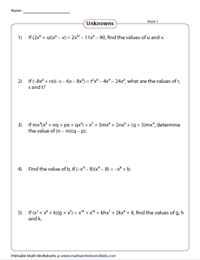

The correct answer is ‑21 t 5 – 9 t 4 + 3 t 3. This changes the sign of the middle and last terms. The negative must be distributed to all terms along with the 3 t 2. Rewriting addition of terms with negative coefficients as subtraction gives ‑21 t 5 – 9 t 4 + 3 t 3. Distributing the monomial -3 t 2 gives -3 t 2 Rewriting the subtraction as adding the opposite gives -3 t 2. In addition, you can combine the terms - xy 2 and -4 xy 2 to get -5 xy 2.Correct. If you look closely, you'll see that the terms 2 x 2 y and -2 x 2 y have the same variable, so they can be combined to get 0 (they're opposites of one another, so they'll cancel each other out). The directions for the problem tell you to simplify, which means you should now look for like terms which can be combined. Now all you have to do is multiply pairs of monomials together. It doesn't matter if some terms are positive and some are negative just write them all in parentheses and add all the products together. If you place all of the terms in parentheses, you don't have to worry about signs right away. Solution: Each term of the left polynomial, x and -2 y, should be distributed through the second polynomial, one at a time. You could multiply a binomial times a trinomial just as easily, as you'll see in Example 4.Įxample 4: Find the product and simplify. In case you're wondering, the numbers of terms in the polynomials don't have to match.


Since there's only one y term, you just copy its power to the final answer there's nothing to add. Similarly, the z power of the answer should be 8, since there's a z to the 5 power in the first monomial and a z to the 3 in the second.

The first term has x to the 2 power, and the second term has x to the 1 power, so the answer will have x to the 2 + 1 = 3 power. Add up the exponents for each variable you listed.As long as a variable appears anywhere in the problem, you should list it next to the coefficient you just found.) (It doesn't matter that the second monomial doesn't contain a y. Solution: First multiply the coefficients: -3 7 = -21 then, list all the variables that appear in the problem in alphabetical order.Multiplying monomials is a skill you'll understand very quickly. (The product of exponential expressions with matching bases equals the base raised to the sum of the powers.)Įven if the steps seem weird at first, don't worry. Step 3 tells you to add the powers of matching variables because of the exponential rule from Encountering Expressions stipulating that x a x b = x a + b.


 0 kommentar(er)
0 kommentar(er)
